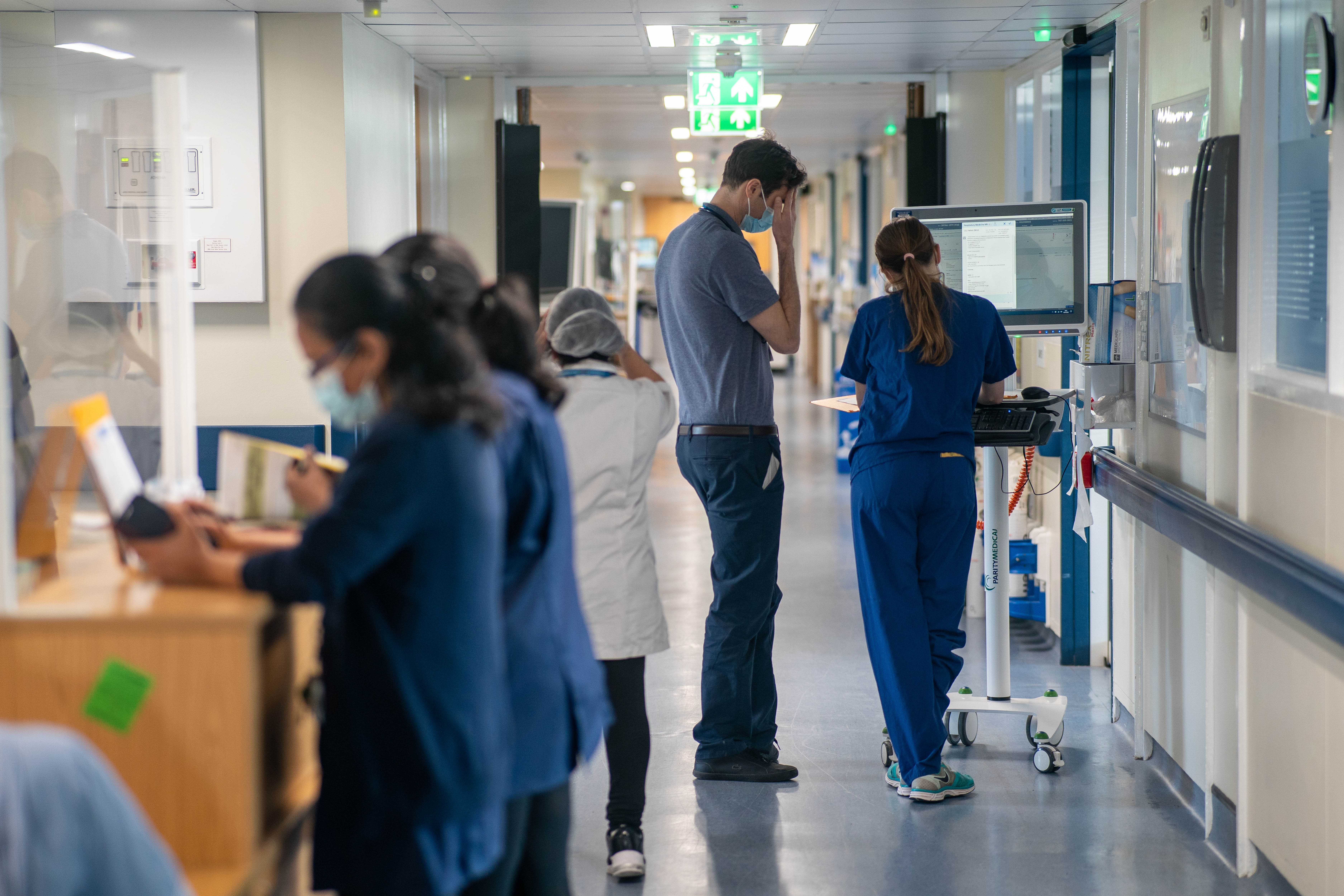Flu patient numbers double in fortnight as NHS faces ‘storm’ of pressures
The figures come amid another spell of industrial action by junior doctors.

A surge in flu patients in England shows no sign of slowing, with health leaders warning of a “storm” of pressures facing hospitals in the new year including a six-day strike by junior doctors.
An average of 942 people were in hospital each day last week with flu, including 48 people in critical care beds, NHS data shows.
The total is up nearly a half (45%) from 648 in the previous week, and more than double the 402 recorded a fortnight earlier.
It is the highest figure so far this winter, but is below the equivalent total for this point last year – 3,746 – when the UK was in the middle of its worst flu season for a decade.
The number of patients testing positive for Covid-19 is also continuing to rise, with an average of 3,631 each day in the week to December 24, up 12% from the previous week and 57% higher than the equivalent week in November.
The figures come amid another spell of industrial action by junior doctors in England, with a 72-hour strike from December 20 to 23 due to be followed by a six-day strike in early January.
More than 86,000 hospital appointments and operations had to be rescheduled because of last week’s action, which is part of a long-running dispute over pay.
Professor Sir Stephen Powis, NHS national medical director, warned the impact of next week’s six-day strike is “likely to be much more severe”, coming at a time when hospitals “usually experience the most pressure with high demand and higher levels of virus admissions”.
He added that the latest data for patients in hospital with winter viruses shows “the storm of pressure” the NHS is facing, with “huge rises in flu patients over the last few weeks and many more norovirus cases than we saw last winter, as well as the ongoing impact of Covid – all on top of the added pressure of industrial action.
“As always, I would urge the public to get their Covid and flu vaccines if they are eligible, make sure you order repeat prescriptions in advance of the upcoming bank holiday weekend and, as ever, only use 999 or A&E in an emergency, with 111 online the best place to go for any other conditions.”
Norovirus levels, while high compared with last year, have fallen in the latest figures, with an average of 451 adult hospital beds filled last week by patients with diarrhoea and vomiting or norovirus-like symptoms.
This is down 20% from 566 beds the previous week but still nearly two-thirds (62%) higher than at this stage last year, when the average stood at 279.
Norovirus is the most common infectious cause of diarrhoea and vomiting, spreading easily through contact with someone who has the virus or contaminated surfaces.
Two other measures of the performance of NHS hospitals also showed signs of an improvement in the run up to Christmas.
An average of 11,439 hospital beds per day in the week to December 24 were occupied by people ready to be discharged, down from 12,728 the previous week and lower than 13,033 at this point in 2022.
Some 50% of patients ready to leave hospital last week were actually discharged each day, up from 45% a week earlier and 44% at this stage last year.
Meanwhile, a total of 14,262 hours were lost across hospitals in England last week to ambulance handover delays that took longer than 30 minutes to complete, around half the number for the previous week (28,966) and 61% down on the equivalent week in 2022 (36,292).
Some 23% of patients arriving by ambulance last week had to wait more than half an hour to be handed over to A&E teams, compared with 33% in the previous week and 37% at this point last year.
Sir Julian Hartley, chief executive of NHS Providers, which represents NHS trusts in England, described the drop in handover delays as “encouraging” and said: “Careful planning and hard work are making their mark, but there is every prospect of the challenges intensifying in the coming weeks.
“As we head towards the new year we urge the Government and unions to think afresh, and find a way to resolve the damaging and demoralising industrial dispute which has caused so much disruption for patients.
“There is still time to head off the longest strike in the history of the NHS.”
The rise in the number of people in hospital testing positive for Covid, though still well below levels seen in previous winters, is mirrored in data for NHS staff absences due to the virus.
An average of 2,597 staff were off work because of Covid each day in the week to December 24, up more than half (51%) compared with 1,715 in the week to November 26.
Fresh official estimates of the prevalence of coronavirus among the general population are not due to be published until the new year.
The latest available data from the Office for National Statistics suggests 4.2% of people in private households in England and Scotland are likely to have tested positive for Covid on December 13, the equivalent of around 2.5 million people or one in 24.
Bookmark popover
Removed from bookmarks